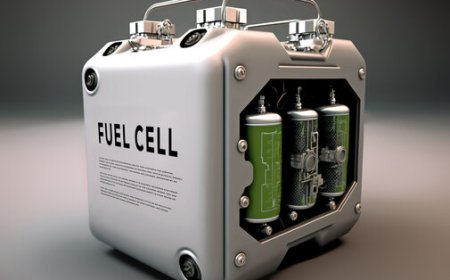Magnetic Resonance Imaging (MRI): What It Detects and How to Prepare
In modern times, Magnetic Resonance Imaging or MRI stands to be chief among the many highly advanced diagnostic methods.

In modern times, Magnetic Resonance Imaging or MRI stands to be chief among the many highly advanced diagnostic methods. An MRI offers a clinically clear image of the inner workings of the body, very detailed yet harmless concerning radiation hazards. Understanding what it is used for and how the procedure takes place can relieve some level of anxiety and ensure that one is completely prepared for it, be it in the case of having been prescribed to undergo an MRI scan or for the sheer sake of knowing how it works.
This article seeks to answer the frequently asked question of what an MRI detects and offers a working guide for preparing for an MRI appointment.
What Are MRI Scans?
The scanning is done on each organ, tissue, and skeletal system with a powerful magnetic field, radio pulses, and a computer. Having no ionizing radiation, it remains predominantly preferred if lots of repetition is required.
The procedure requires the patient to be lying down inside a huge cylindrical machine. The scanner cuts through the body into slices through which cross-sectional images are produced, and they can be viewed in more than one plane to diagnose a plethora of different health conditions.
What Does an MRI Detect?
One of the questions most patients ask is: What does an MRI detect? So basically, it depends on what part of the body is being scanned. Here's a look at what MRI can detect:
1. Brain and Nervous System
It is very good at detecting neurological conditions such as:
-
Brain tumor
-
Multiple sclerosis (MS)
-
Stroke damage
-
Aneurysms
-
Brain inflammation or infection
-
Spinal cord injuries or abnormalities
Chronic headaches, seizures, or unexplained changes in behavior are considered,
upon occasion.
2. Musculoskeletal System
Soft tissue, joint, and bone examinations are best performed with MRI:
-
Ligaments and tendons getting torn (i.e., ACL tears)
-
Disc herniations and spinal degeneration
-
Arthritis and joint inflammation
-
Tumors or infections of bone.
Orthopedic surgeons utilize MRIs for treatment planning in sports injuries or chronic joint pain.
3. Heart and Blood Vessels
Cardiac MRIs are performed to evaluate the:
-
Heart structure and function
-
Blocked or damaged blood vessels
-
Another thing is hazardous to congenital defects.
-
Myocarditis: inflammation in the heart muscle.
MRA also gives a very good view of the vessels to diagnose aneurysms and vascular malformations.
4. Internal Organs
Abdominal and Pelvic MRI can diagnose:
-
The liver diseases like cirrhosis, fatty liver.
-
Kidney abnormalities
-
Tumors or cysts of the pancreas, ovaries, or uterus
-
Prostate-related problems
It could be inflammatory bowel diseases (e.g., Crohn's or ulcerative colitis).
An MRI is mainly used to stage tumors following a cancer diagnosis, as well as to monitor how treatment is achieving progress."
Preparation for MRI: What You Should Know Before the Scan.
Proper MRI preparation assures better results and hence offers a more pleasant experience. Below are some tips to prepare for an MRI:
1. Discuss Your Medical Conditions with Your Doctor
Before your scan, inform your doctor if you have:
-
Pacemaker or other metal implants in your body
-
Cochlear implants
-
Artificial joints or surgical clips
-
Claustrophobia
Some metal devices are considered incompatible with the magnetic field of MRI. Your physician may decide to reroute to a different diagnostic procedure if necessary.
2. Eating and Drinking Instructions
Generally, you may eat and drink normally before an MRI appointment. However, for an abdominal or pelvic MRI, you would be asked not to eat for some hours.
Always observe the instructions given at your clinic.
3. Dress Comfortably and Leave Metal Items at Home
Comfortable clothing counts toward a proper dress, and metal zippers, snaps, and buttons are not allowed. You may, in fact, be asked to put on a hospital gown.
Take off your jewelry, eyeglasses, hairpins, and hearing aids. Any metal can distort the scan or may even prove to be unsafe during the procedure.
4. Bring your medical record
Bring along those records for prior scans-for example, from a CT scan, X-Ray, or another MRI. Comparison of old with new images helps the radiologist to detect changes more accurately.
5. Sedation might come in handy
If the closed place freaks you out, talk to your physician about a mild sedative just before your MRI. Some clinics will also have open MRI machines for a less confining experience.
Inside the MRI Scan
You will be lying on a table, which will glide inside the MRI machine.
The procedure does not cause pain, but loud noises of tapping or thumping will appear. The technicians will usually provide you with earplugs or headphones.
You must totally keep still during the scan to avoid blurry images.
Usually, the examination takes about 15 to 60 minutes, depending on which concrete site is assessed.
If needed, contrast (mostly gadolinium-based) is injected to enhance image clarity, although patients should inform their health care provider in case of known allergies or kidney problems before receiving the contrast.
After the Scan
Most people return to regular activities immediately after an MRI; if one is injected with contrast or sedative, they may be required to remain in observation for a brief recovery period.
The images are interpreted by a radiologist, and finally, your doctor will discuss the findings with you, usually within a few days.




























